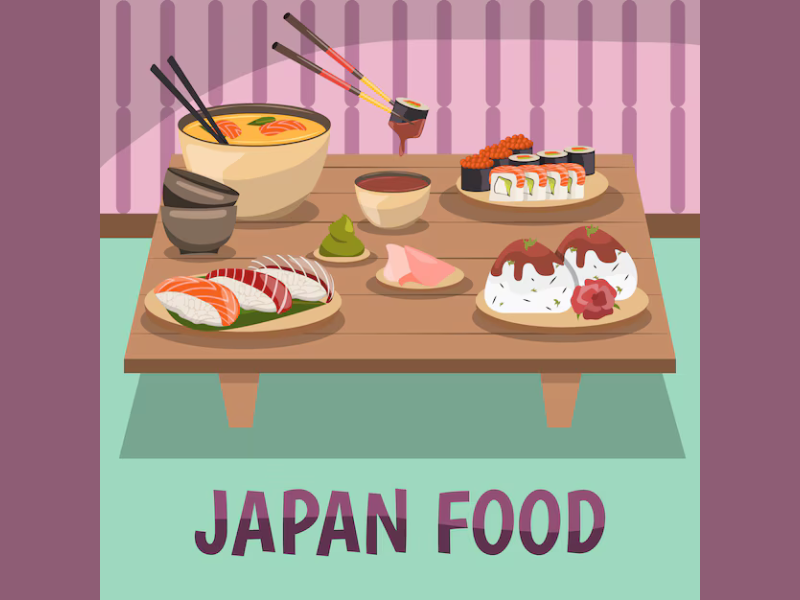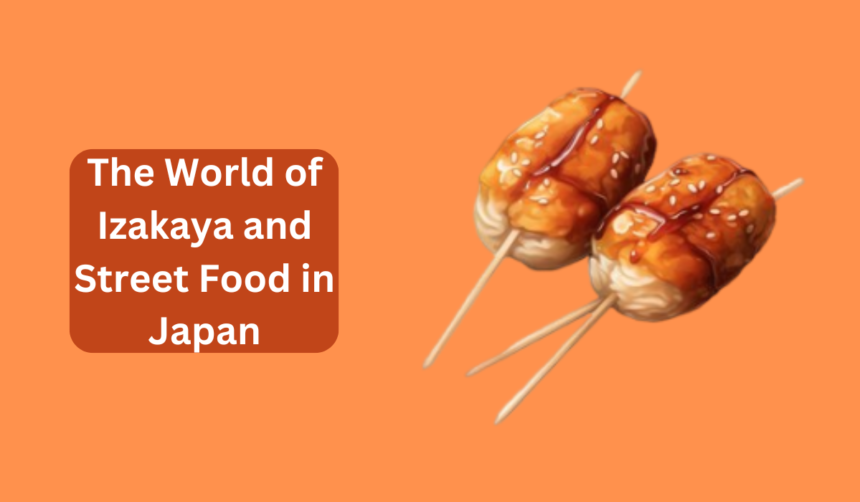When most people think of Japanese cuisine, they likely picture sushi, ramen, or tempura. However, there is a whole world of delicious dishes to explore beyond these traditional favorites. One particularly popular style of dining in Japan is Izakaya, which can be described as a casual gastropub where people gather to enjoy drinks and small plates of food. In addition, Japan is also known for its diverse and mouth-watering street food offerings. In this article, we will delve into the world of Izakaya and street food in Japan, exploring the unique flavors and culinary traditions that make these dining experiences so special.
1. What is Izakaya?
Izakaya is a type of Japanese dining establishment that is similar to a pub or tavern. It is a casual and laid-back setting where friends and coworkers gather to socialize over drinks and a variety of small dishes. In an Izakaya, guests can order a wide range of menu items, including grilled skewers, fried snacks, sashimi, and more. The atmosphere is typically lively and convivial, making it a popular spot for after-work gatherings and casual get-togethers.
2. History of Izakaya
The history of Izakaya can be traced back to the Edo period in Japan, when it was common for travelers and merchants to stop at roadside inns for a drink and a meal. Over time, these roadside inns evolved into more formal drinking establishments known as sakaya, where customers could enjoy sake and small dishes. Eventually, the modern Izakaya concept emerged, combining elements of both traditional Japanese taverns and bars to create a unique dining experience.
3. What to Expect at an Izakaya
When dining at an Izakaya, guests can expect a casual and relaxed atmosphere where the focus is on enjoying good food and drinks with friends. Many Izakayas have an extensive menu with a wide variety of dishes to choose from, allowing diners to sample a little bit of everything. In addition to traditional Japanese fare, some Izakayas also offer fusion dishes and international flavors to cater to a diverse clientele.
4. Popular Izakaya Dishes to Try
Some of the most popular dishes at Izakayas include yakitori (grilled chicken skewers), karaage (fried chicken), edamame (steamed soybeans), and sashimi (fresh raw fish). Other common menu items include tempura (battered and fried vegetables or seafood), gyoza (dumplings), and tofu dishes. Each Izakaya has its own specialties, so it’s worth exploring different establishments to discover new and delicious dishes.
5. Izakaya Etiquette
When dining at an Izakaya, there are a few important etiquette rules to keep in mind. It is customary to pour drinks for others before filling your own glass, and to say “kanpai” (cheers) before taking a sip. It is also polite to order a variety of dishes to share with the group and to finish all the food on your plate. Additionally, it is considered rude to leave food on your plate, so make sure to pace yourself and only order what you can finish.
6. Street Food in Japan
In addition to Izakaya dining, Japan is also known for its vibrant street food culture. Street food vendors can be found throughout Japan, selling a wide range of snacks and portable meals to hungry passersby. From savory treats like takoyaki (octopus balls) and okonomiyaki (savory pancakes) to sweet delights like taiyaki (fish-shaped pastries) and dango (skewered rice dumplings), there is no shortage of delicious street food to sample in Japan.

7. What Makes Japanese Street Food Special
Japanese street food is beloved for its freshness, quality, and variety. Vendors take pride in using the best ingredients available, from locally sourced meats and seafood to seasonal fruits and vegetables. Many street food items are made to order, ensuring that each bite is hot and fresh. In addition, Japanese street food is known for its attention to detail and presentation, with vendors often creating beautiful and intricate dishes that are as pleasing to the eye as they are to the palate.
8. Must-Try Street Food in Japan
Some of the must-try street food items in Japan include takoyaki, which are crispy balls filled with diced octopus and topped with savory sauce and bonito flakes; okonomiyaki, a savory pancake made with cabbage, meat, and seafood and topped with a sweet and savory sauce; and taiyaki, a fish-shaped pastry filled with sweet red bean paste or custard. Other popular street food items include yakisoba (stir-fried noodles), karaage (fried chicken), and katsu (breaded and fried cutlets).
9. Where to Find Japanese Street Food
Japanese street food can be found at outdoor markets, festivals, and food stalls throughout the country. Some of the most famous street food destinations in Japan include Tsukiji Outer Market in Tokyo, Nishiki Market in Kyoto, and Dotonbori in Osaka. These bustling food hubs offer a wide variety of street food vendors selling everything from traditional Japanese snacks to international fusion dishes. Exploring these markets is a great way to experience the rich tapestry of flavors and culinary traditions that Japan has to offer.
10. Tips for Enjoying Japanese Street Food
When indulging in Japanese street food, it’s important to keep a few tips in mind. Be prepared to eat with your hands, as many street food items are designed to be portable and easy to enjoy on the go. It’s also a good idea to have some cash on hand, as some street food vendors may not accept credit cards. Finally, don’t be afraid to try new and unfamiliar dishes – you never know when you might discover your new favorite street food treat.
11. The Future of Izakaya and Street Food in Japan
While Izakayas and street food have long been staples of Japanese dining culture, they continue to evolve and adapt to changing tastes and trends. In recent years, there has been a growing interest in more health-conscious and sustainable dining options, leading some Izakayas and street food vendors to incorporate locally sourced and organic ingredients into their menus. Additionally, there is a growing trend towards fusion cuisine, with chefs combining traditional Japanese flavors with international influences to create innovative and exciting dishes.
12. Exploring Izakaya and Street Food in Japan
Whether you’re a seasoned foodie or a curious traveler looking to expand your culinary horizons, exploring Izakaya and street food in Japan is a delicious adventure waiting to be had. From the lively atmosphere of an Izakaya to the tantalizing aromas and flavors of street food stalls, there is no shortage of culinary delights to discover in Japan. So grab a friend, hit the streets, and get ready to indulge in the rich and diverse world of Japanese cuisine.
13. Conclusion
In conclusion, Izakaya and street food are two quintessential dining experiences that showcase the unique flavors and culinary traditions of Japan. From the vibrant energy of an Izakaya to the savory and sweet delights of street food stalls, there is something to satisfy every palate in Japan. So next time you find yourself in the Land of the Rising Sun, be sure to venture beyond sushi and ramen to explore the world of Izakaya and street food – you won’t be disappointed.
14. References
– “Izakaya: The Japanese Gastropub” by Mark Robinson, japan-guide.com
– “A Beginner’s Guide to Japanese Izakaya Dining” by Sophie Friedman, culturetrip.com
– “8 Must-Try Japanese Street Foods” by Linda Dunsmore, theculturetrip.com
15. Additional Resources
– “Street Food: Exploring the World’s Most Authentic Tastes” by Tom Kime, DK Publishing
– “Izakaya: The Japanese Pub Cookbook” by Mark Robinson, Tuttle Publishing.
FAQs about “Beyond Sushi: Exploring the World of Izakaya and Street Food in Japan”
- What sets “Beyond Sushi: Exploring the World of Izakaya and Street Food in Japan” apart from other guides to Japanese cuisine? This book offers a comprehensive exploration of Izakaya and street food culture in Japan, delving beyond sushi to showcase the diverse and flavorful world of casual dining experiences.
- Which dining experiences are covered in this book? “Beyond Sushi” covers two quintessential Japanese dining experiences: Izakaya, which are informal gastropubs known for their small plates and drinks, and street food stalls, where vendors offer a variety of snacks and quick bites.
- Are specific dishes and street food favorites featured in this book? Yes, this book features a curated selection of dishes and street food favorites commonly found in Izakaya and street food stalls across Japan. From yakitori and takoyaki to okonomiyaki and ramen, readers will discover a plethora of delicious options.
- How does this book offer insights into the cultural and social aspects of Izakaya and street food culture in Japan? This book provides insights into the cultural and social aspects of Izakaya and street food culture, exploring their role as social hubs where friends and colleagues gather to unwind, share food, and enjoy each other’s company.
- Can readers expect to find practical tips for exploring Izakaya and street food scenes in Japan from this book? Absolutely! “Beyond Sushi” offers practical tips, dining etiquette advice, and recommendations for navigating Izakaya and street food scenes in Japan, empowering readers to embark on their own culinary adventures and savor the authentic flavors of Japanese casual dining.
Advantages:
- Engaging Title: The title “Beyond Sushi: Exploring the World of Izakaya and Street Food in Japan” is captivating and immediately draws attention. It suggests a deeper dive into Japanese cuisine beyond the commonly known sushi, offering readers an intriguing exploration.
- Culinary Exploration: By focusing on izakaya and street food, the title encourages readers to explore the diverse and lesser-known aspects of Japanese cuisine, providing insights into the rich tapestry of flavors, ingredients, and culinary traditions found in Japan.
- Educational Value: The title offers readers valuable insights into Japanese food culture, introducing them to the concept of izakaya dining and the variety of street foods available in Japan. It provides cultural context and enriches understanding of Japanese gastronomy.
- Gastronomic Adventure: Readers can anticipate embarking on a culinary adventure through Japan, discovering the unique and flavorful dishes served in izakayas and found on the streets, offering a glimpse into the everyday dining experiences of locals.
- Inspiration for Travel and Dining: The title may inspire readers to explore izakayas and street food stalls during their travels to Japan or to seek out Japanese restaurants that offer these authentic dining experiences. It encourages culinary exploration and experimentation with Japanese flavors.
Disadvantages:
- Oversimplified Focus: While the title emphasizes izakaya and street food, it may oversimplify the diversity of Japanese culinary traditions and overlook regional variations and specialties, potentially limiting the depth of the discussion.
- Cultural Stereotyping: Focusing solely on izakaya and street food may perpetuate stereotypes about Japanese cuisine, potentially overlooking the sophistication and diversity of other Japanese culinary experiences.
- Limited Scope: The title may not cover every aspect of Japanese izakaya and street food culture in depth, potentially leaving out certain dishes or culinary traditions that could provide a more comprehensive understanding.
- Accessibility: Some Japanese street foods and izakaya dishes may be difficult to find outside of Japan or major culinary hubs, limiting the practicality of exploring these aspects of Japanese cuisine for readers in other regions.
- Audience Engagement: While the title appeals to readers interested in culinary exploration and Japanese cuisine, it may not attract those seeking a more focused or specialized discussion of specific Japanese dishes or culinary topics.
















